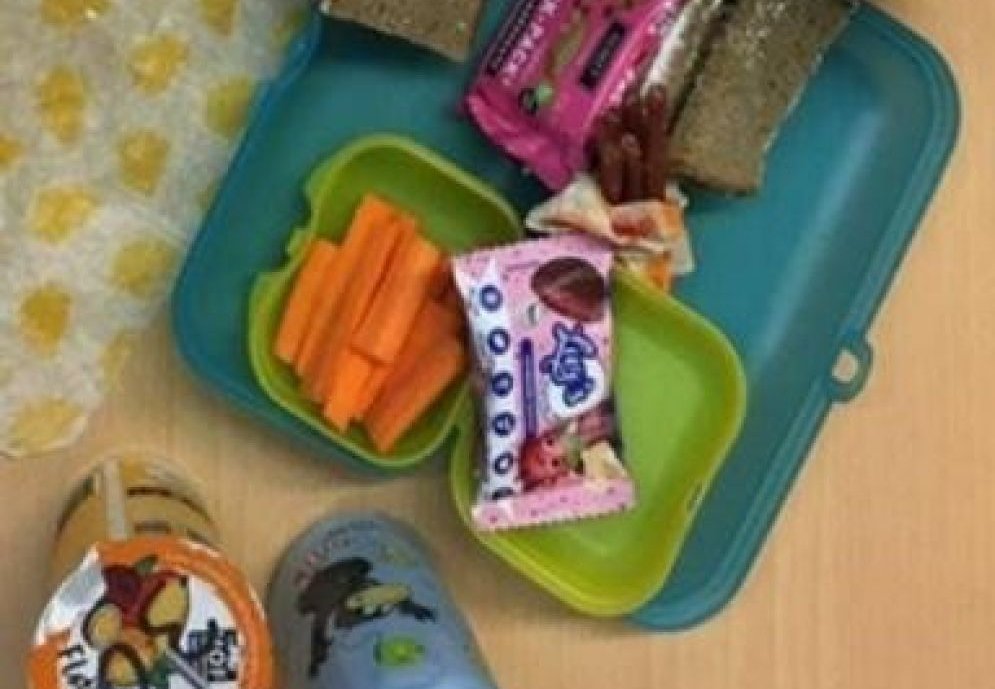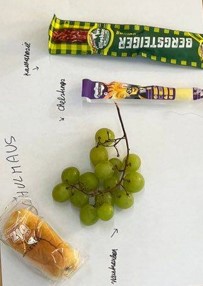

Check your snack
Project summary
Get creative with a camera and document waste packaging with younger pupils.
Learning outcome
Pupils will
- become aware of some of the effects of consumption decisions.
- think about alternatives to plastic.
- understand that plastic is difficult to avoid completely, but there are many ways to handle it more responsibly.
- set goals to produce less plastic waste and dispose of it appropriately.
Time required
1-2 hours
Tools or equipment
Camera (or mobile phone), paper (A4 and A1 for collage)
Activity description
Collect school snack packaging from pupils or the school snack bar/canteen. You are then ready to start this photo documentation activity for pre-school and primary school children.
1. Photo documentation of snacks brought from home.
- Each pupil artfully places their snack on an A4 sheet of paper.
- Take photos of the pupils’ snacks.
- Create an (anonymised) collage of the photos.

2. Find plastic waste in the photos.
- The group discusses why some snacks are packaged in plastic.
- Why is small packaging, particularly for schoolchildren, used for items like sausages, cheese, sweets, and bread rolls?
- Are there unpackaged alternatives?
3. Consolidation of what has been learnt.
Discussion: What is the problem with plastic waste? How can we reduce our plastic snack waste at school?
Plan: Let’s reduce snack-related plastic waste in our class!
Evaluation: Repeat the "check your box" activity.
- Could we reduce our plastic waste?
- What was easy?
- What was difficult?
4. Present the collage to parents.
Show the collage and the results of the project to parents (online or at a parents' evening). As a result, parents may become active in finding packaging alternatives or consciously avoiding packaging.
Additional activities:
- Prepare a zero-waste school breakfast.
- Collect your class’s plastic waste for a week—what could be avoided?
- Plastic packaging experiment – see resource
- Store check: Go shopping for school snacks—what is packaged, and what can be bought unpackaged?
- Plastic-free snacks challenge: Try a week (or a month) without plastic packaging.
Tips how to implement the topic to school curriculum
Nature: Environmental protection and sustainability, consumer education
Language: Listening with understanding, speaking to others, holding conversations, developing inner images
Maths: Concepts of size, measuring activities, presenting data in a structured way
Art: Designing photographs, creating collage, presenting
